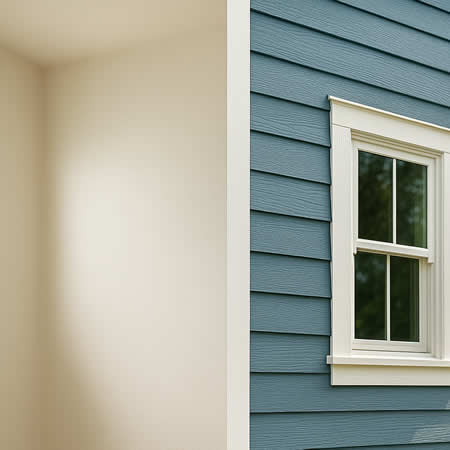Interior vs. Exterior Paint: What’s the Real Difference (and Why It Matters in Houston’s Climate)?

When it comes to updating your home’s look, choosing the right paint may seem like a simple step. But in reality, selecting between interior vs exterior paint can make all the difference—especially in a city like Houston, where high humidity, heavy rains, and blazing sun constantly test the durability of your walls. Homeowners often ask: “Can I use exterior paint indoors?” or “Does interior paint hold up outside?” The answers matter more than most people think.
What Makes Interior and Exterior Paint Different?
At a glance, interior and exterior paint look nearly identical. Both come in countless colors, finishes, and price points. But beneath the surface, they are engineered for very different purposes.
- Interior paint is formulated for beauty and durability inside the home. It contains resins that allow for smooth application, easy cleaning, and resistance to scuffs, stains, and fading caused by artificial light.
- Exterior paint, on the other hand, is built tough to withstand extreme weather. It includes additives that protect against UV rays, mold, mildew, and temperature fluctuations—all things Houston homeowners are familiar with.
Why Houston’s Climate Raises the Stakes
In many areas, you might get away with stretching the boundaries of paint types. But Houston’s hot, humid climate is a game changer. The combination of high humidity and frequent rainfall creates the perfect breeding ground for mold and mildew, making it essential to choose paint types suitable for humid climates.
For exteriors, this means selecting paints with anti-microbial additives and UV protection to prevent fading and peeling. For interiors, breathable formulas that resist moisture are critical in spaces like bathrooms, kitchens, and laundry rooms, where humidity levels spike.
Can You Swap Interior and Exterior Paint?
It’s tempting to grab a leftover can and use it wherever needed, but here’s why that’s a mistake:
- Using exterior paint indoors: While it may seem tougher, exterior paint actually contains more volatile organic compounds (VOCs) that can release harmful fumes for months. This makes it unsafe for enclosed spaces, particularly bedrooms or family rooms.
- Using interior paint outside: Interior paint simply won’t hold up to Houston’s UV rays or heavy rains. Within a short time, it will crack, peel, or fade—leaving your home looking neglected and forcing you into costly repaints.
The bottom line? Stick to each paint in its proper environment.
Best Practices for Houston Homes
Whether you’re refreshing a living room or giving your siding a makeover, here’s how to make the most of your paint investment:
- Use high-quality brands designed for Houston’s humidity and sun exposure.
- Prep surfaces carefully, since moisture and heat can magnify flaws.
- Hire an expert who understands local conditions and can recommend the right finish, whether it’s matte, satin, or gloss.
For exterior painting, this is especially important. A professional can ensure proper sealing and application so your paint job doesn’t just look great—it lasts.
Why a Professional Painter Makes the Difference
With Houston’s climate challenges, choosing the right products and techniques is just the beginning. An exceptional Houston painter brings the expertise, tools, and attention to detail needed to create a long-lasting finish, indoors and out. They know how to avoid common pitfalls, such as blistering paint from trapped moisture or fading from direct sunlight.
If you’re ready to protect and beautify your home, trust John McDonald Painting for reliable service in Houston—whether you need interior touch-ups or expert exterior painting.